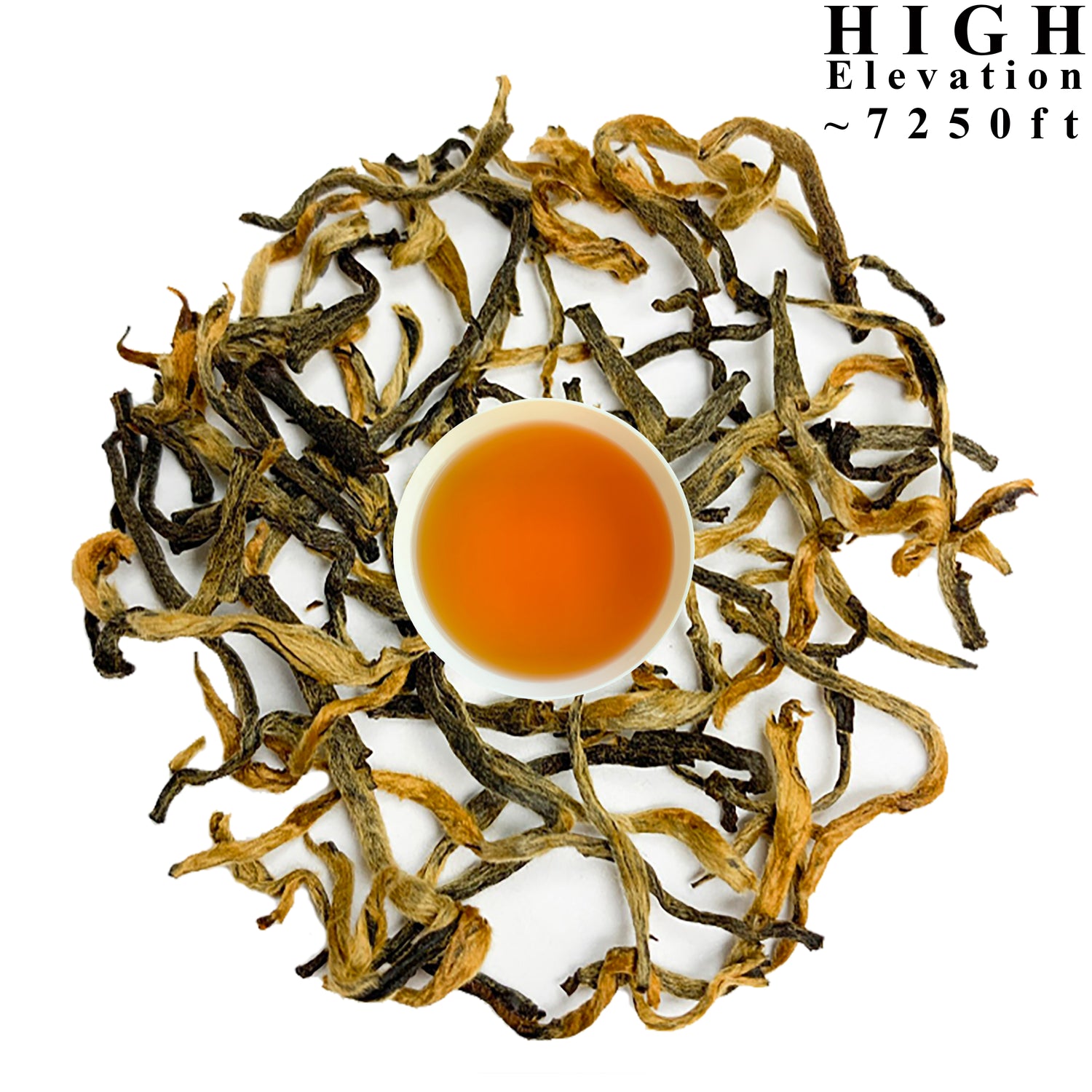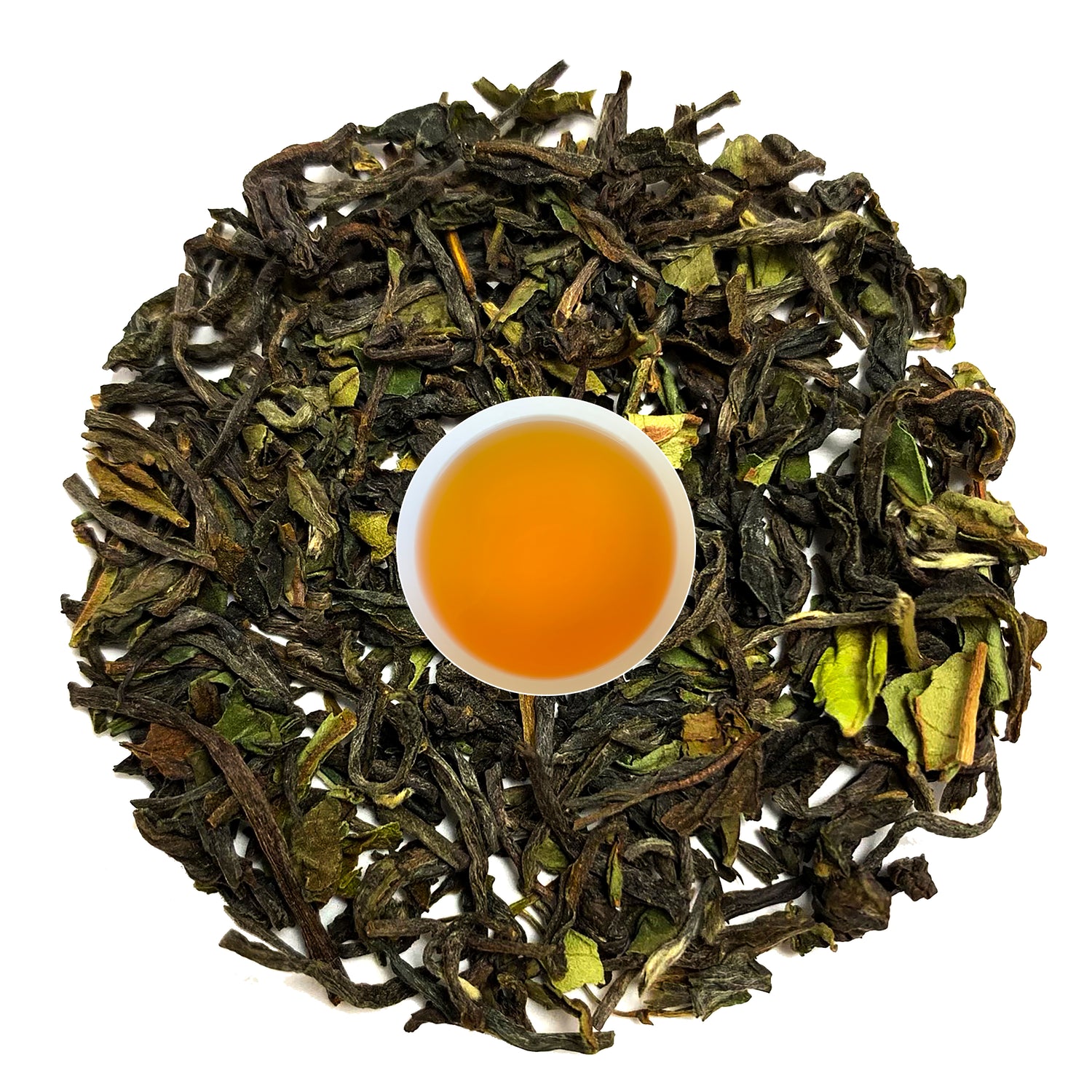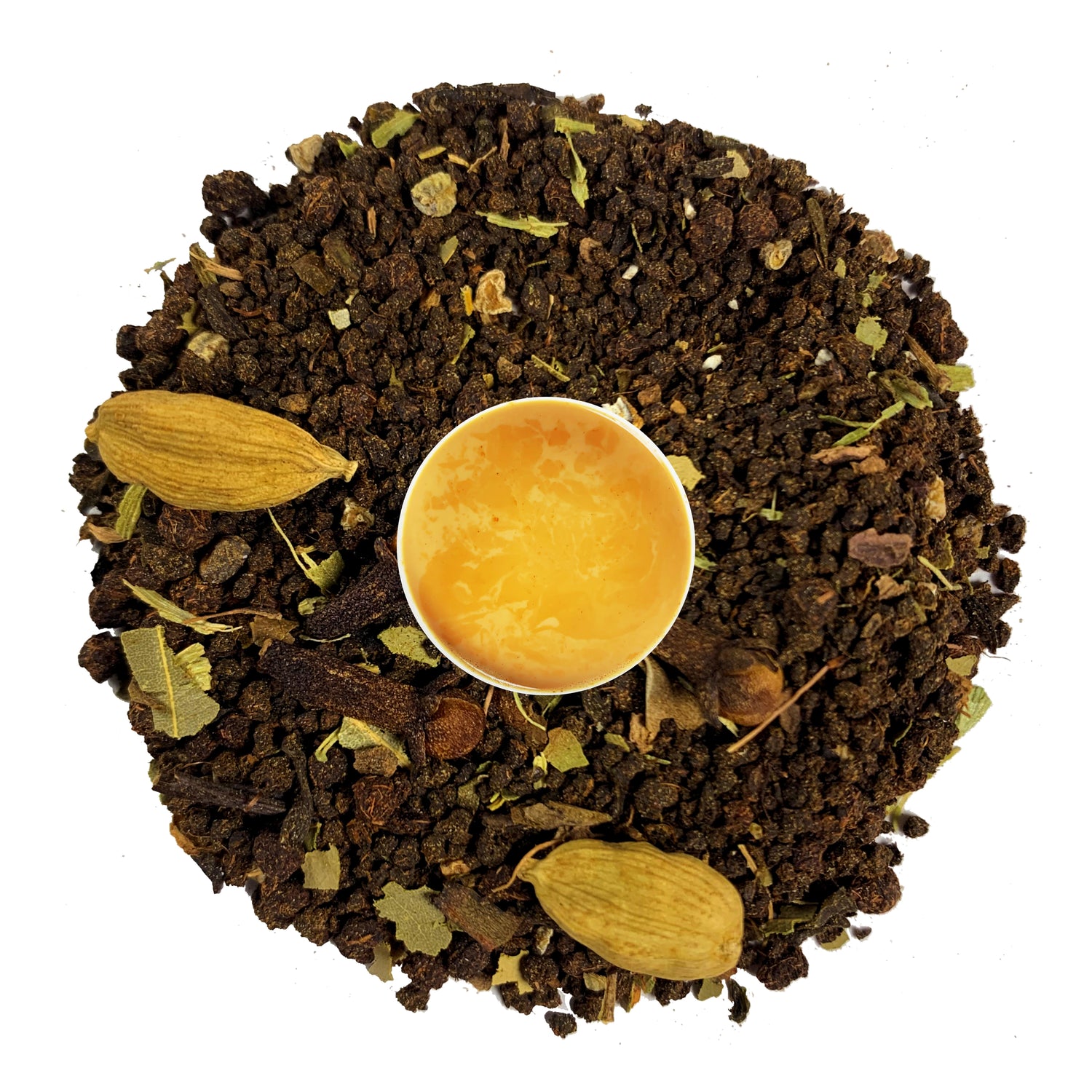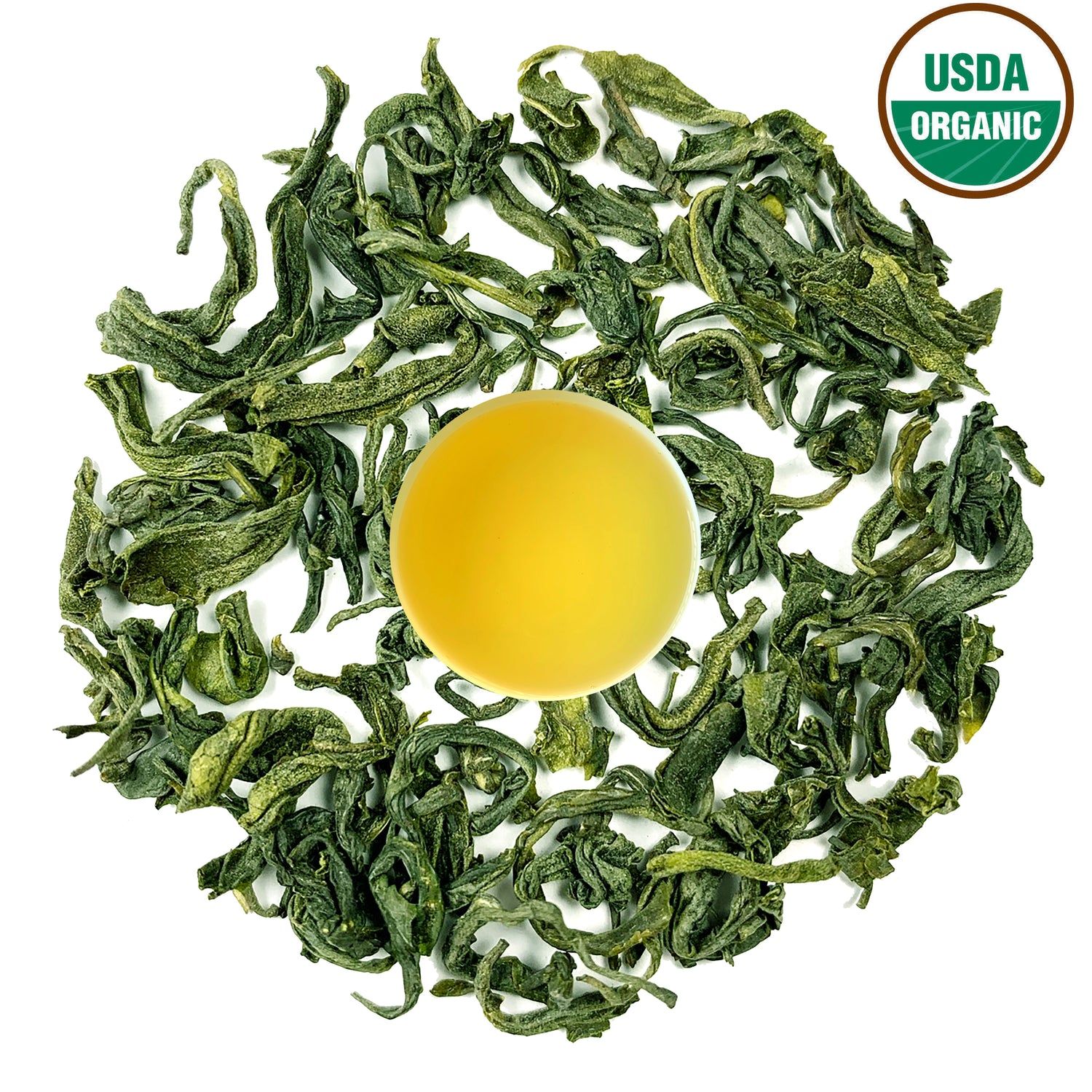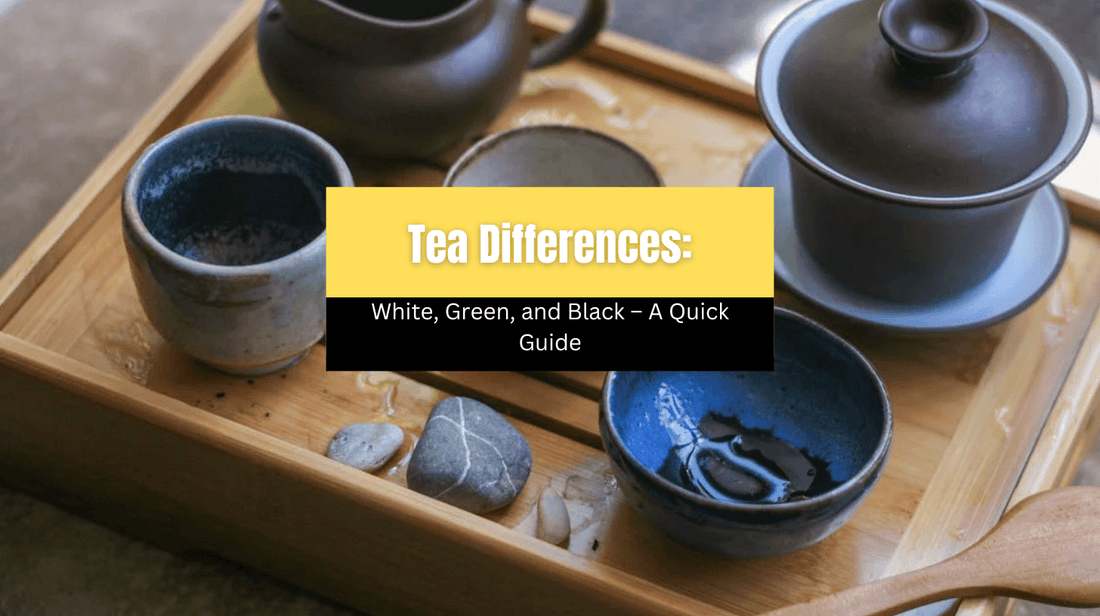
Tea Differences: White, Green, and Black – A Quick Guide
One Plant, Endless Possibilities
Did you know white, green, and black tea all come from the same plant — Camellia sinensis?
The magic lies not in what kind of plant they come from, but in how the leaves are processed after harvesting.
A little more oxidation here, a little less drying there — and suddenly you have three completely different flavors, colors, and aromas.
In this quick guide, we’ll break down exactly what makes white, green, and black tea unique — so the next time you brew a cup, you’ll know exactly what’s in your mug
1. What is White Tea?
Light, Delicate, Naturally Sweet
White tea is the most delicate and least processed of all teas.
It’s made from the young buds (and sometimes very young leaves) of the tea plant, simply picked and gently dried — often in natural sunlight.
Key Characteristics:
- Processing: Barely processed (minimal oxidation).
- Flavor Profile: Light, sweet, floral, sometimes slightly fruity.
- Color: Pale golden or light yellow when brewed.
- Caffeine Level: Lower compared to green and black tea (but can vary).
Popular Types of White Tea:
- Himalayas Best White Tea
- Silver Needle Tea
👉 Fun Fact: The name "white tea" comes from the tiny silver hairs on the young buds, not from the color of the brew.
Buy the finest White Teas from Danfe's White Tea Collection
2. What is Green Tea?
Fresh, Grassy, Lightly Bold
Green tea is partially processed — the leaves are quickly heated after picking to prevent oxidation.
Depending on the style (Japanese or Chinese), they might be steamed or pan-fired.
Key Characteristics:
- Processing: Quick heating to stop oxidation.
- Flavor Profile: Fresh, grassy, slightly vegetal or nutty.
- Color: Light green or yellowish-green brew.
- Caffeine Level: Moderate (higher than white tea, lower than black).
Popular Types of Green Tea:
- Mt. Pumori Best Green Tea (Certified Organic)
- Hibiscus Green Tea
- Nepal Green Tea Leaves
- Nepal Jasmine Green Tea
👉 Pro Tip: The bitterness people sometimes associate with green tea usually comes from brewing it too hot or too long
Buy the finest White Teas from Danfe's Green Tea Collection
3. What is Black Tea?
Bold, Robust, and Rich
Black tea undergoes full oxidation — the leaves are allowed to fully darken and react with the air before being dried.
This gives black tea its deeper, richer flavors and darker color.
Key Characteristics:
-
Processing: Fully oxidized.
-
Flavor Profile: Malty, robust, bold, sometimes with notes of honey, fruit, or chocolate.
-
Color: Dark amber to reddish-brown brew.
-
Caffeine Level: Highest among the three (though still less than coffee).
Popular Types of Black Tea:
- ILam Loose Leaf Black Tea
- Rose Black Tea
- Signature Golden Tips Tea
- Shangri-La Golden Tips Tea
👉 Interesting Fact: In China, what the West calls "black tea" is often called "red tea" because of the color of the liquid!
Buy the finest White Teas from Danfe's Black Tea Collection
4. Key Differences at a Glance
|
Aspect |
White Tea |
Green Tea |
Black Tea |
|
Processing |
Least processed |
Lightly processed |
Fully oxidized |
|
Flavor |
Light, sweet, floral |
Fresh, grassy, vegetal |
Bold, malty, rich |
|
Color (Brew) |
Pale yellow |
Light green |
Dark amber |
|
Caffeine Level |
Low to medium |
Medium |
High |
|
Brewing Temperature |
160–185°F |
170–185°F |
200–212° |
5. Which Tea Should You Choose?
Choosing between white, green, and black tea really depends on your mood and what you’re looking for:
-
Craving something light and refreshing?
Go for white tea. -
Need something fresh and energizing without being overpowering?
Choose green tea. -
Looking for bold flavors and a stronger caffeine kick?
Black tea’s your best friend.
👉 Pro Tip: Try keeping all three kinds of tea at home so you can pick your perfect brew depending on the time of day or your mood!
Final Sip: There’s No Wrong Choice
At the end of the day, white, green, and black teas are simply three beautiful faces of the same plant.
Each type offers its own story, flavor, and mood — and part of the fun is exploring them all.
So whether you’re sipping a delicate white, a grassy green, or a bold black — enjoy the journey.
Every cup is a connection to tradition, craft, and nature itself.
Cheers to your next brew!
Check out Danfe Tea’s full collection and find the flavor (and caffeine level) that fits your vibe
Quick FAQ
Q: Are white, green, and black tea from different plants?
A: No! They all come from Camellia sinensis — the difference is how they are processed.
Q: Which tea has the most caffeine?
A: Black tea generally has the most, followed by green tea, then white tea.
Q: Is white tea healthier than green or black tea?
A: All teas offer health benefits! White tea is rich in antioxidants, but green and black tea also have unique health-boosting compounds.

